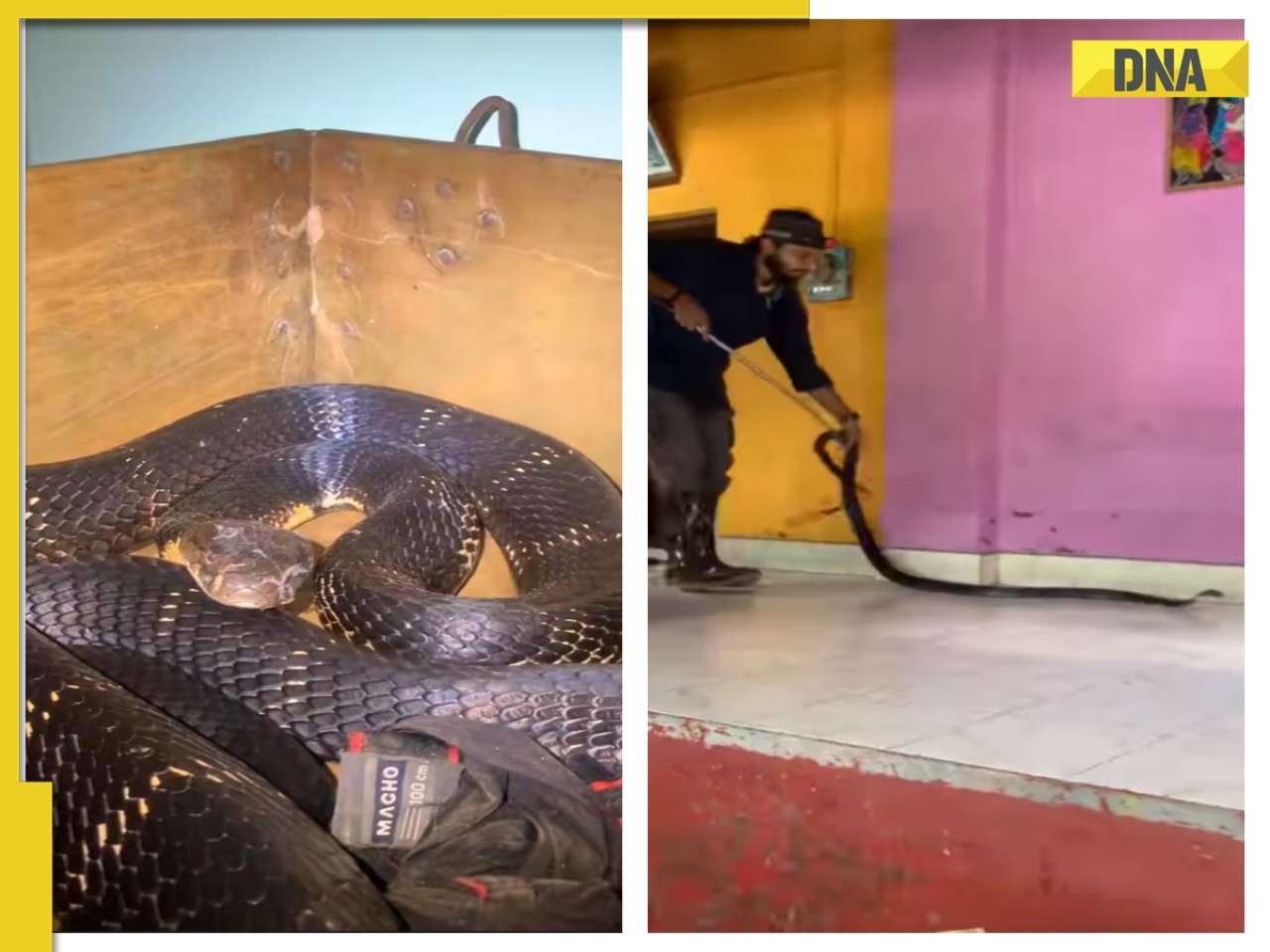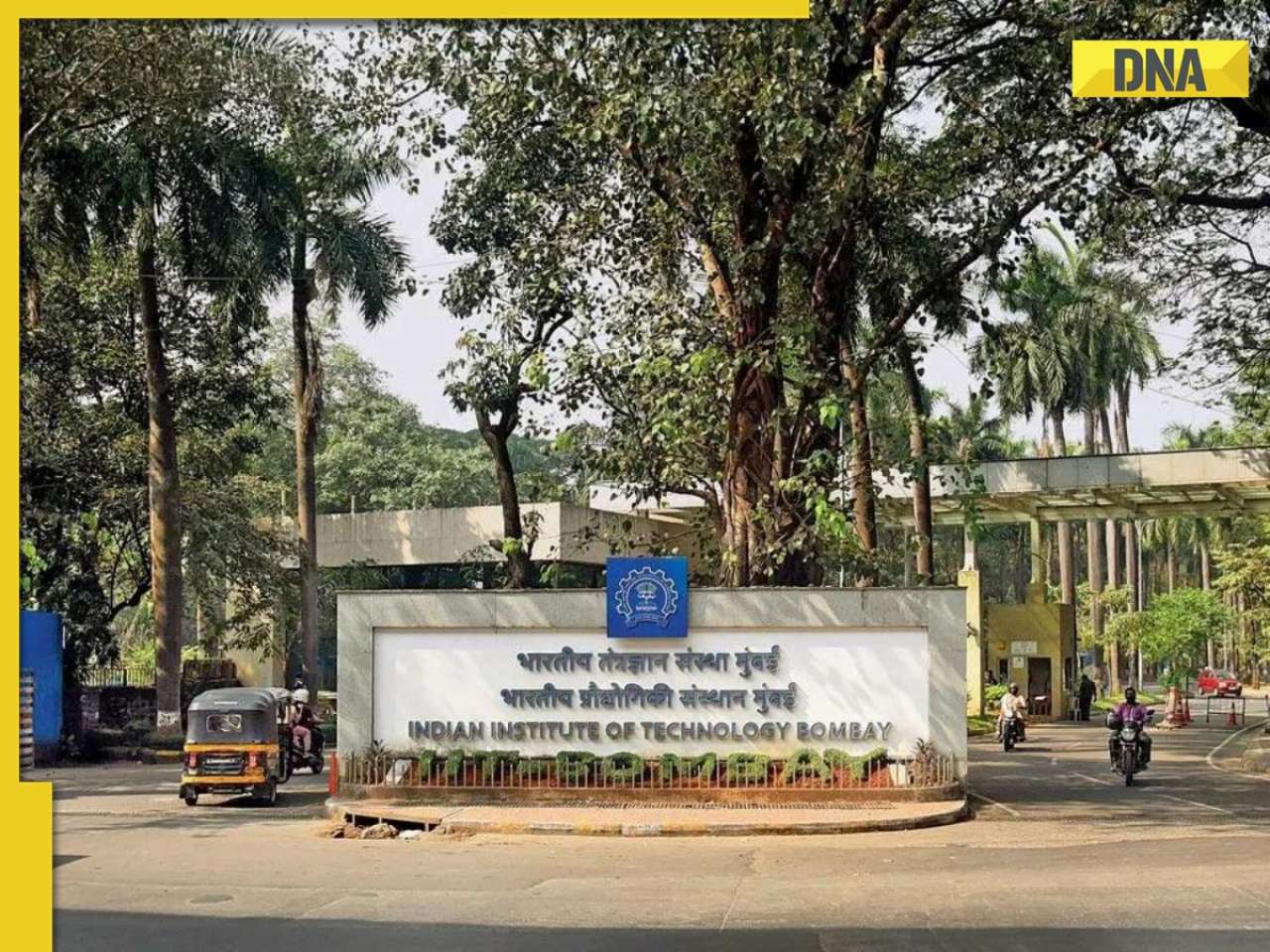In such countries as India, the standard treatment for snakebites involves administering ‘antivenom’. To create it, scientists first gather venom from the specific snake species.
Researchers from the University of Sydney and the Liverpool School of Tropical Medicine have found that heparin, a well-known blood thinner, can also be used to counteract cobra venom. This means heparin could potentially serve as an antidote for cobra snakebites. This discovery could change how snakebites are treated in areas where cobra snakebites are a major health issue.
Professor Greg Neely from the University of Sydney, who co-authored the study, told Interesting Engineering media house (IE), that they already had FDA-approved heparinoid drugs—which are similar to heparin, a blood thinner, and help prevent blood clots, besides having other medical uses, such as reducing inflammation—at the dosage and delivery method they used. If they could prove this works on humans, it could be quickly available as a treatment.
Antivenom-Snake Bite Solution
In such countries as India, the standard treatment for snakebites involves administering ‘antivenom’. To create it, scientists first gather venom from the specific snake species. They then inject small, safe amounts of this venom—known as sub-lethal (not deadly) and sub-toxic (not harmful)—into animals like horses and sheep. These animals produce antibodies to combat the venom. The antibodies are then collected, purified, and stored in vials with preservatives for use.
Ability to Decrease Necrosis
Necrosis can occur in snakebite cases when the venom damages skin and tissue. This damage reduces blood flow, causing cells to die. As a result, the affected area may become discoloured and swollen, and cause pain. In severe cases, necrosis can lead to tissue loss and, if left untreated, can be life-threatening.
Neely emphasised the importance of their finding and said their discovery could significantly lessen the serious injuries from necrosis caused by cobra bites. It may also slow down the venom, which could help improve survival rates. The research team, including scientists from Australia, Canada, Costa Rica, and the UK, used Clustered Regularly Interspaced Short Palindromic Repeats (CRISPR) gene-editing technology to find out which human genes cobra venom attacks to cause necrosis.
Scientists have discovered that heparin and similar drugs can block these targets, helping to stop necrosis from occurring. Their findings show that heparin can work as a ‘decoy’ antidote by binding to the venom’s toxins and neutralizing them.
Pathway to Human Trials
Ph.D student and lead author Tian Du highlighted the benefits of heparin, stating that it was affordable, widely available, and was listed as an ‘essential medicine’ by the World Health Organization (WHO). Once human trials are successful, it could be quickly introduced as an affordable, safe, and effective treatment for cobra bites.
Explaining the use of CRISPR in their research, Neely told IE that they used CRISPR to disable every gene in the human genome—the complete set of genetic material in humans—in a large group of cells. Then they added snake venom, which normally would kill all healthy human cells. The human genome, consisting of about 20,000 to 25,000 genes, includes all the DNA, which contains the instructions for building and maintaining the body.
The researchers sequenced the surviving cells to pinpoint the human genes that provide resistance. They found out that cobra venom attacks heparan and heparins. By using extra heparin, a common medicine, they injected it at the site of the snakebite. In mice, this method prevented nearly all local damage. Heparan and heparins are types of molecules found in the body. They are involved in various biological processes, including blood clotting and cell growth. In the context of the study, these molecules are the targets of cobra venom, meaning the venom attacks them.
Transitioning from successful lab trials to human clinical trials requires a lot of funding. Neely further told IE that they needed to raise about $8 million to start a clinical trial, which could be difficult since cobra bites affect some of the poorest regions in the world. However, they hoped to attract interest from governments or charitable organizations to help cover the costs.
Low/Middle-Income Nations’ Challenges
Snakebites cause up to 138,000 deaths each year and around 400,000 people experience long-term effects. In such regions as India and Africa, cobras are responsible for many of these snakebite cases. WHO has made snakebite a priority in its efforts to address neglected tropical diseases and bring down the global incidence of snakebites by 50% by 2030. Professor Nicholas Casewell from the Liverpool School of Tropical Medicine and co-author of the study said snakebites were the most deadly among neglected tropical diseases and their impact was mostly felt in rural communities of low- and middle-income countries.
Current antivenoms are mostly ineffective for severe local venom effects, causing painful swelling, blisters, tissue damage, and long-term disabilities. The heparin-based antidote is a new type of treatment for cobra venom that focuses on preventing tissue damage at the bite site, unlike current antivenoms. Neely further explained that, while antivenoms could effectively counteract the widespread effects of cobra venom, they were not very good at stopping tissue damage right at the bite site.
The main challenge in low- and middle-income countries is getting money to fund clinical trials. If the trials are successful, the next challenge will be distributing the medicine to those in need. This, possibly, involves training healthcare workers in rural areas on how to inject heparin or a similar molecule, Neely explained to IE.
(The author of this article is a Defence, Aerospace & Political Analyst based in Bengaluru. He is also the Director of ADD Engineering Components, India, Pvt. Ltd, a subsidiary of ADD Engineering GmbH, Germany. You can reach him at: girishlinganna@gmail.com)
![submenu-img]() 'IPL mein Rs 130 ka bhi nahi bikega...': YouTubers roast this Pakistani cricketer after disappointing Pak vs Ban series
'IPL mein Rs 130 ka bhi nahi bikega...': YouTubers roast this Pakistani cricketer after disappointing Pak vs Ban series![submenu-img]() Mahesh Bhatt to present adaptation of Fawad Khan-Mahira Khan’s Pakistani show Humsafar, aims to 'bridge' Indo-Pak divide
Mahesh Bhatt to present adaptation of Fawad Khan-Mahira Khan’s Pakistani show Humsafar, aims to 'bridge' Indo-Pak divide![submenu-img]() Vicky Kaushal set to join this Punjabi sensation at his concert in recently-announced grand India tour
Vicky Kaushal set to join this Punjabi sensation at his concert in recently-announced grand India tour![submenu-img]() SEBI employees call for chief Madhabi Puri Buch's resignation over alleged 'toxic' work culture
SEBI employees call for chief Madhabi Puri Buch's resignation over alleged 'toxic' work culture![submenu-img]() Viral video: 9-foot long cobra found hidden in bedroom, leaves internet dumbfounded, WATCH
Viral video: 9-foot long cobra found hidden in bedroom, leaves internet dumbfounded, WATCH ![submenu-img]() J-K चुनाव: BJP ने जारी की स्टार प्रचारकों की लिस्ट, PM मोदी समेत 40 नेताओं का नाम
J-K चुनाव: BJP ने जारी की स्टार प्रचारकों की लिस्ट, PM मोदी समेत 40 नेताओं का नाम![submenu-img]() मंत्री, विधायक... 24 घंटे में 22 नेताओं का इस्तीफा, हरियाणा में पहली लिस्ट आते ही BJP में भगदड़
मंत्री, विधायक... 24 घंटे में 22 नेताओं का इस्तीफा, हरियाणा में पहली लिस्ट आते ही BJP में भगदड़![submenu-img]() सीपीएम नेता सीताराम येचुरी की हालत गंभीर, दिल्ली के AIIMS में वेंटिलेटर पर किए गए शिफ्ट
सीपीएम नेता सीताराम येचुरी की हालत गंभीर, दिल्ली के AIIMS में वेंटिलेटर पर किए गए शिफ्ट![submenu-img]() 'PM मोदी किस बात पर मांग रहे माफी, भ्रष्टाचार या RSS...' शिवाजी स्टेच्यू विवाद पर बोले राहुल गांधी
'PM मोदी किस बात पर मांग रहे माफी, भ्रष्टाचार या RSS...' शिवाजी स्टेच्यू विवाद पर बोले राहुल गांधी![submenu-img]() CM अरविंद केजरीवाल की जमानत याचिका पर Supreme Court ने सुरक्षित रखा फैसला
CM अरविंद केजरीवाल की जमानत याचिका पर Supreme Court ने सुरक्षित रखा फैसला ![submenu-img]() DNA Auto Awards 2024: Maruti Suzuki Swift nominated for ‘CAR OF THE YEAR’; check price, features
DNA Auto Awards 2024: Maruti Suzuki Swift nominated for ‘CAR OF THE YEAR’; check price, features![submenu-img]() DNA Auto Awards 2024: Hyundai Alcazar Facelift nominated for ‘CAR OF THE YEAR’; check details
DNA Auto Awards 2024: Hyundai Alcazar Facelift nominated for ‘CAR OF THE YEAR’; check details![submenu-img]() Hyundai Creta Knight Edition launched in India: Check price, features, design
Hyundai Creta Knight Edition launched in India: Check price, features, design![submenu-img]() DNA Auto Awards 2024: Citroen Basalt nominated for ‘CAR OF THE YEAR’; check price, features
DNA Auto Awards 2024: Citroen Basalt nominated for ‘CAR OF THE YEAR’; check price, features![submenu-img]() DNA Auto Awards 2024: Tata Curvv nominated for ‘CAR OF THE YEAR’; check price, features
DNA Auto Awards 2024: Tata Curvv nominated for ‘CAR OF THE YEAR’; check price, features![submenu-img]() After UPSC topper Tina Dabi, IPS Aditya Srivastava's marksheet goes viral, check his scores in different subjects
After UPSC topper Tina Dabi, IPS Aditya Srivastava's marksheet goes viral, check his scores in different subjects![submenu-img]() Meet man who used to sell pens on street, worked as marketer to fund his education, now owns Rs 6000 crore company
Meet man who used to sell pens on street, worked as marketer to fund his education, now owns Rs 6000 crore company![submenu-img]() Meet woman who lost parents at 5, rejected high-paying job offer for UPSC exam, but failed to crack it four times then…
Meet woman who lost parents at 5, rejected high-paying job offer for UPSC exam, but failed to crack it four times then…![submenu-img]() Meet woman, social media queen who prepared for UPSC exam without coaching, but failed to clear it five times and then…
Meet woman, social media queen who prepared for UPSC exam without coaching, but failed to clear it five times and then…![submenu-img]() IIT Bombay minimum salary drop to Rs 4 LPA, average package is...
IIT Bombay minimum salary drop to Rs 4 LPA, average package is...![submenu-img]() Giriraj Singh Attacked: Union Minister Giriraj Singh Assaulted In Begusarai, Bihar; Accused Arrested
Giriraj Singh Attacked: Union Minister Giriraj Singh Assaulted In Begusarai, Bihar; Accused Arrested![submenu-img]() Haryana Assembly Election 2024: Haryana Assembly Election Date Changed, Check Details Here
Haryana Assembly Election 2024: Haryana Assembly Election Date Changed, Check Details Here![submenu-img]() Vinesh Phogat Joins Farmers' Protest At Shambhu Border, Answers On Joining Politics | Congress | BJP
Vinesh Phogat Joins Farmers' Protest At Shambhu Border, Answers On Joining Politics | Congress | BJP![submenu-img]() Tripura Floods: 12 Killed, Over 300 Rescued As Heavy Rains Causes Severe Flooding In Tripura
Tripura Floods: 12 Killed, Over 300 Rescued As Heavy Rains Causes Severe Flooding In Tripura![submenu-img]() Kolkata Doctor Murder: Are Indian Rape Laws Enough? Public Opinion On Stricter Measures
Kolkata Doctor Murder: Are Indian Rape Laws Enough? Public Opinion On Stricter Measures![submenu-img]() Meet Hitesh Kumar Sethia, Harvard alumnus to take over as CEO of Mukesh Ambani's company
Meet Hitesh Kumar Sethia, Harvard alumnus to take over as CEO of Mukesh Ambani's company![submenu-img]() Mukesh Ambani vs Ratan Tata: TCS to compete with Jio in...
Mukesh Ambani vs Ratan Tata: TCS to compete with Jio in...![submenu-img]() This is the biggest mall in Pakistan, know who owns it and how much it cost to build it
This is the biggest mall in Pakistan, know who owns it and how much it cost to build it![submenu-img]() Meet man who worked as salesman, then built India's 4th largest pharma company worth Rs 96703 crore, his net worth is...
Meet man who worked as salesman, then built India's 4th largest pharma company worth Rs 96703 crore, his net worth is...![submenu-img]() This man sold balloons on street, then built company worth Rs 57383 crore, Virat Kohli is his…
This man sold balloons on street, then built company worth Rs 57383 crore, Virat Kohli is his…![submenu-img]() Indian cinema's most hit jodi did 130 films together, gave 50 hits; not Shah Rukh-Kajol, Amitabh-Jaya, Dharmendra-Hema
Indian cinema's most hit jodi did 130 films together, gave 50 hits; not Shah Rukh-Kajol, Amitabh-Jaya, Dharmendra-Hema![submenu-img]() Good news for Reliance Jio users: Mukesh Ambani offers 5 best cheapest plans for Jio customers
Good news for Reliance Jio users: Mukesh Ambani offers 5 best cheapest plans for Jio customers![submenu-img]() This superhit was offered to Dharmendra, Rajesh Khanna replaced him, worked for free, still earned 10 times his fees
This superhit was offered to Dharmendra, Rajesh Khanna replaced him, worked for free, still earned 10 times his fees![submenu-img]() Meet Ranbir Kapoor's 'niece' who became star at 4, interviewed Virat Kohli, Salman Khan, gave Rs 200 crore hit, now...
Meet Ranbir Kapoor's 'niece' who became star at 4, interviewed Virat Kohli, Salman Khan, gave Rs 200 crore hit, now...![submenu-img]() Teachers' Day 2024: 5 iconic teachers in Bollywood films who gave us meaningful life lessons
Teachers' Day 2024: 5 iconic teachers in Bollywood films who gave us meaningful life lessons![submenu-img]() SEBI employees call for chief Madhabi Puri Buch's resignation over alleged 'toxic' work culture
SEBI employees call for chief Madhabi Puri Buch's resignation over alleged 'toxic' work culture![submenu-img]() 6 dead, 3 injured due to heavy rain, landslides in Nagaland; Rs 4 lakh ex-gratia announced
6 dead, 3 injured due to heavy rain, landslides in Nagaland; Rs 4 lakh ex-gratia announced![submenu-img]() Kolkata doctor rape-murder case: Victim's parents make SHOCKING revelation, say 'police tried to...'
Kolkata doctor rape-murder case: Victim's parents make SHOCKING revelation, say 'police tried to...'![submenu-img]() 'Resume work, leave...': IMA chief Asokan to protesting doctors amid rising uproar over Kolkata rape and murder case
'Resume work, leave...': IMA chief Asokan to protesting doctors amid rising uproar over Kolkata rape and murder case![submenu-img]() Maharashtra: Absconding sculptor of collapsed Shivaji statue arrested in Thane
Maharashtra: Absconding sculptor of collapsed Shivaji statue arrested in Thane 













































)
)
)
)
)
)
)
)
)
)
)
)
)
)
)





)
)
)
)
)
)